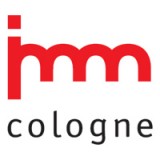

Published on : Thursday, January 18, 2018
 The Pure Talents Contest, held every year to encourage up-and-coming designers, announced its winners for the fifteenth edition on the very first day of imm Cologne 2018. The winners are Yohay Alush with his outdoor furniture “Nocturnal Beasts” (1st prize), Alissa Arends, Leon Bucher and Yelim Kim with their “Fold it” table (2nd prize), and Julien Manaira with his poetic work “The once liquid plastic” (3rd prize).
The Pure Talents Contest, held every year to encourage up-and-coming designers, announced its winners for the fifteenth edition on the very first day of imm Cologne 2018. The winners are Yohay Alush with his outdoor furniture “Nocturnal Beasts” (1st prize), Alissa Arends, Leon Bucher and Yelim Kim with their “Fold it” table (2nd prize), and Julien Manaira with his poetic work “The once liquid plastic” (3rd prize).
The international jury selected the winners from the shortlist of 20 entries by design students and young graduates from Germany and other European countries such as France, Italy, the Benelux countries and Sweden, and even from as far afield as Israel, Japan and China – representing the best young designers have to offer.
The 2018 vintage had a particularly international flavour. A total of 836 products by 671 designers from 53 countries were submitted. The verdict was arrived at by a five-strong jury, composed of Sebastian Herkner, Sophie Lovell, Rianne Makkink, Tobias Lutz and Harry Paul van Ierssel.
From January 15 to 21, 2018, a special exhibition at imm Cologne will show the 20 most exciting products and prototypes featured in the competition. A remarkable number of the nominated entries this year explore the relationship between the furniture, the user and time.
The winners:
The jury was particularly impressed by the solidity and distinctive character of “Nocturnal Beasts”, and was won over by the message imparted by the outdoor furniture. Tobias Lutz says, “The furniture is like a catalyst that transforms a landscape of ruins into a liveable space where you can simply be.” Sophie Lovell emphasises the social aspect: “The political atmosphere of upheaval that has developed over the last 18 months has triggered a feeling that we need design that connects people and brings us together. And that’s exactly what this project does.”
The second prize was awarded to a joint project by three students at Weimar’s Bauhaus University. Sebastian Herkner says, “Although only in their second year, they have designed something very minimalist and functional that is also linked to the history of Bauhaus. A very smart idea, and you can do it yourself.” Sophie Lovell comments, “The table thematises something that runs through the whole of German industry. It is functional, democratic and honest. And it works.” Rianne Makkink is impressed by the way you can scale the dimensions, and “I love the fact that there are only two functions: fold up and open out.”
The third prize goes to a design loved by the jury because of its aesthetic and poetic quality. “The once liquid plastic” thematises the formation process and the time required for casting epoxy resin layer by layer. “It is very poetic, a delicate application of a technique. It is a work of art and, quite simply, it gives you joy,” says Sophie Lovell. Unlike the “Fold it” table, functionality is not a concern in the shelf-like object. Harry Paul van Ierssel says, “It stands for itself, and I like the way the light plays with it. It is not a perfect piece of furniture, it is not even a proper rectangle, and yet it is perfect nevertheless.” Rianne Makkink adds, “I wouldn’t use it for any purpose. The cabinet itself is what’s beautiful.”
Three entries received Special Mentions this year. “Liga”, nylon-ligature storage furniture by Matthieu Muller and Pierre-Alexandre Cesbron, impressed with its clever, jointed connections. Sebastian Herkner says, “They’re sexy. The nylon ligature is a nice indication of how the piece is used and the neon colours are a highlight in the true sense of the word. Like a butterfly.”
The “Varjo” lamp impressed because “its light transforms the material into something festive,” as Tobias Lutz explains. “It’s almost like a chandelier. And the way it disperses the light is fascinating.”
The third Special Mention went to Pia Regenbrecht’s three-part “Hyperreal”, in which interactions between man, time and furniture are transferred into sculptural objects. Analysing the work, Tobias Lutz says, “This project is shaped by an idea, and not by the search for form.”
Tags: imm cologne, imm cologne 2018, pure talents contest, winners
|